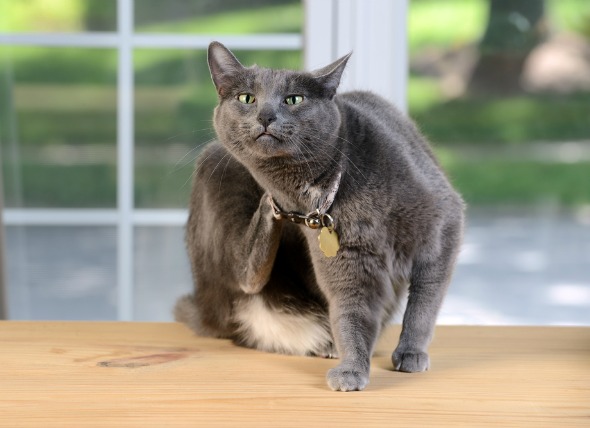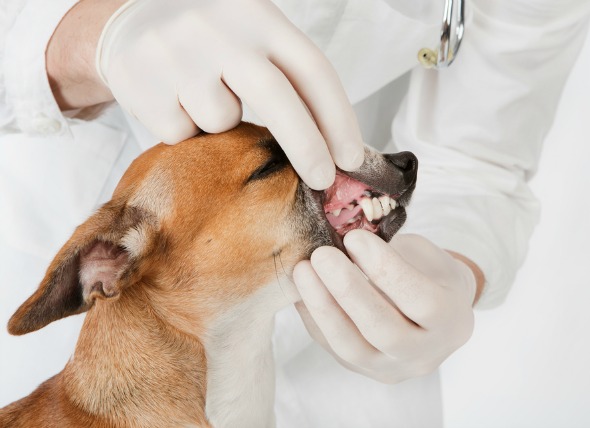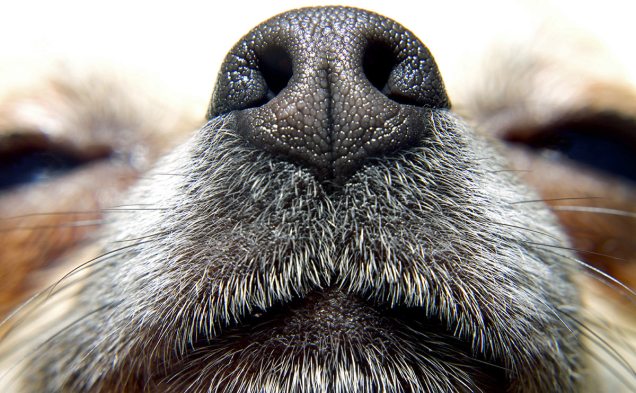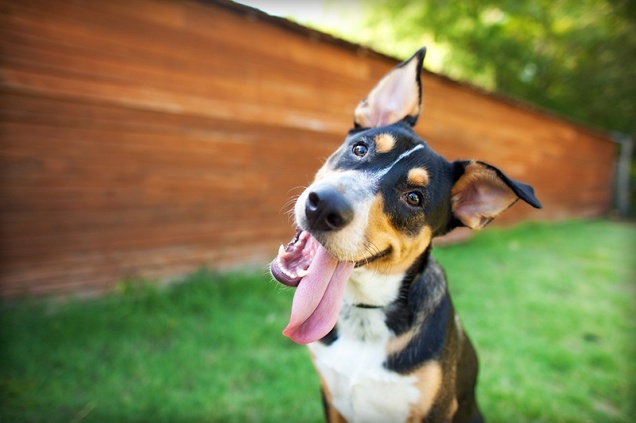By Kathy Diamond Davis
With one dog in the family, why not add another one? What are the pros and cons? When is the right time? Will it change the things you love about the dog you have now?
It’s possible to re-home a dog if things don’t work out, but this can be hard on the family’s emotions and even harder on the dog. The experience can also damage your first dog. It’s worth spending plenty of time to make your best decisions.
Choosing the Dog
Leaving aside for a moment all the changes a second dog would bring to you family’s life, let’s assume you’ve been through all that and it seems right to you to add a dog at this time or some planned time in the future. Of course you need to look at all the normal things about choosing any dog. Those things include: size; grooming required; activity level; disposition for interactions with the people and animals in your environment; genetic tendencies to make noise (and your facilities for keeping noise from disturbing neighbors); matching the dog’s training needs to your training ability; and other factors.
Before settling on a breed, think about the gender of the dog. For the happiest dogs and the safest household, opposite sex dogs almost always do best together. Many same-sex combinations of dogs will fight, sometimes to the death. Those who work out a dominance order may not fare much better. The dominant of two males will become more dominant (toward other dogs, not humans) than he would have otherwise been, and the sometimes submissive one will be pushed into more submission than would have otherwise been normal for him. Because they live with humans rather than in the wild, they are stuck in this situation. It can be stressful.
Two females are more likely to fight to the death than males are. It’s as if neither is willing to admit the other girl is “better than” she is, so they cannot come to a stable pack order. The males make that decision more readily in some cases, but the one who has to be submissive can take it more to heart than the female.
Living with another dog of the same sex can impair a dog’s working ability, which is why many dog professionals (breeders, trainers, handlers) don’t keep their dogs together except perhaps for short periods at a time. This is probably not the lifestyle you have in mind.
A special note about keeping same sex dogs comes from terrier experts. They recommend that you not try to keep a terrier with another dog of the same sex, whether the other dog is a terrier or not. This goes for some other breeds, too, often breeds harking back to terriers in their breed origins. Some terrier mixes inherit the trait, and some do not.
This is about genetics and once it is triggered by life experience, you may find yourself with a totally different dog than you thought you had. In normal circumstances, this aggression toward other dogs would not extend to humans. It may or may not extend to dogs encountered in a dog park. Typically it is triggered by fighting experiences as the dog matures. You can decide just to stop taking the dog-aggressive dog to dog parks.
But when the problem is aggression toward another dog in the home, then what? Same-sex dogs who live together have to determine a pack order, and there will be little spats to do this.
Normally a dog will stop attacking when the other dog yields. But terriers have a quality called gameness. This instinct makes it appear they enjoy fighting. Whether that’s what the dog is actually feeling or not, it means the terrier doesn’t accept the other dog’s surrender, and the game dog keeps attacking. Terriers make fine pets. You just want to avoid keeping two terriers of the same sex together.
Be sure to check out gender differences in any breed or combination of breeds you are considering. For example, in the toy breeds, males can be difficult to housetrain, or in some cases not really possible to ever fully housetrain. In breeds with strong guarding instincts, a male may not be a suitable dog for a novice owner to manage, but a female is more feasible. In some other breeds, the opposite is true. Talk to experts in any breed you’re thinking about (including all breeds involved in a mix), before making your final choice.
If a dog of the opposite gender but same breed as your dog would pose some challenges you don’t want to deal with, keep an open mind to choosing a different breed for your second dog. A larger male with a smaller female can work particularly well. Males are inhibited against aggression toward females, and larger dogs are inhibited against aggression toward smaller ones.
You do not want a size difference so great that one dog could accidentally injure the other just by accidentally running into her or stepping on her, though.
Timing
Getting two dogs at once is a popular idea, but seldom a good one. It takes a dog more time than you would think to become fully integrated into the family. If you bring in another dog before that time, some things can be lost, including best bonding between the dogs and human beings. A safe interval from this point of view is to wait at least two years between bringing a new dog into your family.
This does not apply to professionals or serious hobbyists whose dogs do not actually live together. With strategic separations, the dogs don’t form a pack. This allows dogs to live at one location in combinations and numbers that would be too stressful if they had to slug it out for pack order.
You’ll also want to think about what it’s like to deal with two dogs who are old and terminally ill at the same time. This can easily happen if your dogs are close to the same age, and it’s a financial, energy, health, and emotional burden on the humans.
If you want to participate in a certain activity with a dog—a dog sport, regular walks or jogs, search and rescue, therapy dog visits, or something else that requires the dog to be physically sound—having dogs who are old at the same time forces you to either stop the activity until one of them goes to a heavenly reward, or add more dogs than you had in mind. That can take away from both the bonding and training to the new dog and the loving care you want to lavish on the precious old one as the end approaches.
Spacing the dog’s ages as much as you can has advantages both for you and for them. Five years is a nice age difference for a two- or three-dog home.
People often get a second dog to keep the first one company. You can provide that company yourself. Besides spending time with your dog, you can arrange play-dates with compatible other dogs who also don’t have housemate dogs. A good place to meet prospective playmates and their owners is a training class. Before getting a second dog, you need to observe your dog with other dogs, and you need to train together to the point of off-leash control. You need to know if this dog even WANTS a housemate. Some dogs emphatically do not.
Before adding a second dog, work through or figure out how to reliably manage any behavior problems your first dog has. This includes separation anxiety, inappropriate barking, aggression at windows or fences, killing cats, housetraining accidents, and other such problems. All of these behaviors easily spread from dog to dog when they live together. Two dogs doing any of these things can be more than twice as difficult to live with as one doing it.
If you want to pursue an activity with your first dog, get well down the road into that training and participation before adding a second dog. Otherwise, it’s highly likely your first dog’s training will suffer and the dog will never get to live up to his or her potential. The second one won’t do as well as possible either. What you learn with your first dog will profoundly benefit your work with the next one. All of you will be much better off if you wait until the right time to bring in another dog.
The Introduction
You might do okay just walking in the door with the new dog, especially if the new one is female and your first one is male. A rough beginning is so upsetting to everyone, though, that it’s better to take precautions.
If the new dog is an adult, ask about how this dog gets along with other dogs of the same gender. You need to know the same about your dog, so look for safe opportunities to check that out before you decide whether to adopt a second dog. If either dog is a puppy, find out how the other dog reacts to puppies. Puppies, adolescents, and adult dogs are all different to a dog.
A “normal” dog—hard to define, considering all the exaggerated genetic behavior human breeding has created in dogs—is inhibited against harming puppies. But some dogs are not “normal” in this way and will even kill puppies.
More commonly, an adult dog may avoid the puppy for a few days. In the wild if a puppy yelped, mama would come running. If another adult dog was with the puppy when she arrived, mama would beat that dog up and ask questions later. Adult dogs sometimes avoid a puppy until they are pretty sure no mama is going to come running. At that point, a stable adult will begin age-appropriate interaction with the puppy.
The familiar puppy smell is a huge sign to the other dog of the young one’s age. It wears off before adolescence, and the adult dog begins holding the younger one to a higher standard of dog-to-dog behavior. As the adolescent dog matures, same-sex dogs may start fighting.
Before the younger one of opposite-sex dogs is able to mate, it’s best to have both dogs altered if you plan to keep them together. Dogs tie when they mate, with potential injuries. To avoid this, they BOTH need to be altered, not just one of them. That’s only one of the behavior and health problems that spay/neuter takes care of. When intact, they have to be separated at times. When spayed/neutered, they only need their separate times with the humans and otherwise can live together.
An adult female dog having a male come into her home may feel duty bound to assert her rights as top female from the start. He has to show her that he will take “no” for an answer from her. When you take a female into a male’s house, he tends to say something in doggy language that is something like “Hey, baby, where have you been all my life?”
This is why when transporting one dog to another dog’s home for breeding, it’s much preferred to take the girl to the boy’s house. If you took him to her house, she might say “Just who do you think you are, Mister?”
So if your first dog is female and you’re bringing in a male, help the poor boy put on his best first impression for her. This also goes for introducing two dogs of the same gender.
Try to introduce them on neutral territory. Keep them separated until they show friendly body language to each other. A see-through fence is good for this, since having a dog on leash disrupts the dog’s body language and can actually cause a fight. If you must use leashes, keep them loose, not tight. Ideally you have adequately trained your first dog to be able to control him or her with your voice, off-leash in an enclosed area. Then you may only need to leash the newbie. Having a skilled dog handler help you with the introduction is IDEAL.
If for some reason you must do this indoors, one way to start would be with two crates. First you could crate both dogs where they can see but not touch each other. When they are both clearly calm, you could let one of them out. When they are calm that way, put that one back in the crate and let the other one out. This way they get to safely observe each other’s body language before they have to interact with each other.
When they’re both calm, you would let them get together, starting as calmly as you can possibly arrange, and in the largest space available that is safe. The more they can move around, the better they can use their body language to get to know each other. Try it yourself: notice how much more of your dog’s body language you can observe from 30 feet than from 5 feet.
When both dogs are healthy and vigorous, they may run together and bump each other to figure out who is faster, who is stronger, etc. A female may especially value a male who is as strong or is stronger than she is, because she’ll feel he can protect her. Don’t make a big deal out of any humping during introductions, but gently interrupt it before it becomes oppressive to the dog being humped. If the male tries to hump the female and she snarks at him, he should stop and not fight back. If he doesn’t respect her right to say “no,” they may not be compatible as family members.
For the first couple of weeks, the dogs are likely to play a lot as their way of getting to know one another. This will likely moderate somewhat over time, but if one dog seems to be unhappy about the play, interrupt it without punishing either dog. Dogs are different in how they play. Some can play in the house without damaging things while others cannot.
With a fenced yard and two playful dogs, much of your work of keeping your dogs exercised may be done. This exercise must have your supervision, though, and at various times they cannot be allowed to play for health reasons. When you have a dog sick, hurt, or who has just had surgery, ask your veterinarian about play activity and follow instructions. This is important for the dog’s physical healing as well as the relationship between the two dogs.
Managing Two Dogs
Several things change in how you manage your first dog when a new dog joins the family. You might get away with not taking these precautions, but it’s far wiser not to take the risk.
1. Separate your dogs for feeding. If your first dog is used to having food out all the time, that needs to change now—preferably before adding the new dog. Feed at least two meals a day. Three or four smaller meals are fine. You can make training opportunities of these times, and frequent meals can help your dogs get along better—if they are separated and never feel they have to compete over food.
2. When you give treats to one dog in front of the other one, give the other dog treats, too, but do it in such a way that they don’t compete over the food. This approach helps each dog support the other’s learning rather than resenting the attention paid to the other dog. Once in awhile, though, it can aid learning to give treats to one dog and withhold them from another. For example, let’s say your dogs are outdoors and you call them back into the house. Fuzzy comes, but Fuzzette doesn’t. If you close the door and let Fuzzette look longingly through the glass to see Fuzzy getting treats while she doesn’t get any, she will begin to get the idea that it pays to come in when called.
3. When a dog does something well, let the other dog see that. When a dog tends to misbehave in a particular situation or be scared of it, try to separate the dogs for that situation until the one who handles it well is stable enough to influence the other one to do better. Sometimes that never comes, but taking some care about this tends to pay off at least part of the time.
4. Don’t leave chews or highly desirable toys out for dogs to “share.” That’s asking for a fight, and no chew item is worth the risk. Give your dogs these things when they are separated. This means that your dog who used to be an only dog will give up being able to have free access to these items. Keep that in mind in your decision about whether or not to add a dog.
5. Use a crate for a dog who needs that support, and give the other dog whatever freedom that dog can handle. If you give each dog proper individual attention, this difference will not be a problem. Never put two dogs in the same crate, no matter how well they get along.
6. Don’t give a dog bed privileges until the dog is ready. One guideline to keep in mind is around a year of age, when temperament is fairly evident. Don’t take bed privileges away from one dog because the other one can’t handle those privileges. Dogs can deal with that difference. And it is absolutely fine to never allow your dogs on your bed if that is your preference. It is what most professionals recommend, even though most of us don’t listen!
7. Each dog needs frequent individual attention from you—daily at home, and regularly away from the house without the other dog. This is important to their emotional health as well as your relationship with each of them.
Pros and Cons of Adding a Second Dog
Adding a second dog may more than double your dog expenses and work. When one dog develops something contagious, the other may catch it, too. They can hurt each other in play or fights. Separating them for medical or behavioral situations can be quite a job. If you have to walk them to potty them due to not having your own yard, they may need separate walks.
Travel is much easier with one dog than with two. There are many places you could take one dog, but can’t take two. Boarding is more expensive for two than for one. Taking a dog along on a trip tends to benefit the dog’s future behavior. Leaving a dog home when you go on a trip can cause behavior problems, including separation anxiety, crate stress, noise fears, and housetraining breakdowns. If you travel a lot and take your dog along, giving up the ability to do that would be a sad disadvantage.
In some situations, adding a second dog will aid confidence, if one of them is confident and has enough influence over the other dog to bring up that one’s confidence level. On the other hand, a nervous dog can seriously damage the confidence of a housemate dog.
Anxieties commonly spread from one dog to the other. Aggressive behavior and predatory behavior toward other animal species tend to be picked up by the other dog in the family, too.
Observing the dogs’ body language with each other is interesting. It can help you understand your dogs better, and it can help you with their training. You could do this through play dates with other people’s dogs instead, though.
One major reason to add a second dog is if losing your only dog would be too damaging to you. It is possible to lose both at the same time, but more usual to lose one first. Having another beloved dog in the home at this time can make a critical difference to emotionally vulnerable people.
Big Decision
Adding any dog is potentially a life-changing decision for the human and any dogs already in the home. Be sure to take your time. Don’t do it on impulse because a desirable dog has become available.
Carefully chosen and spaced dogs can enable you to do things that are enjoyable and healthy for you. It does make for a lot of work, though, often at extremely inconvenient times. The expenses can be quite daunting, too. Life in a good home with the right other dog can be nice for both dogs. But your dog can be happy as an only dog, and some dogs will not be happy sharing you.
Consider all the angles and gather all the information before deciding whether or not to add a second dog. It is a big change in daily life between having one dog and having two. With the resources of time, energy, finances and physical facilities; two dogs in the family can be a rewarding lifestyle. It does mean the dogs having to share you and lots of other resources, it does reduce the extreme closeness you can have with just one dog, and it may not fit with other things you want from life. Only you can decide.
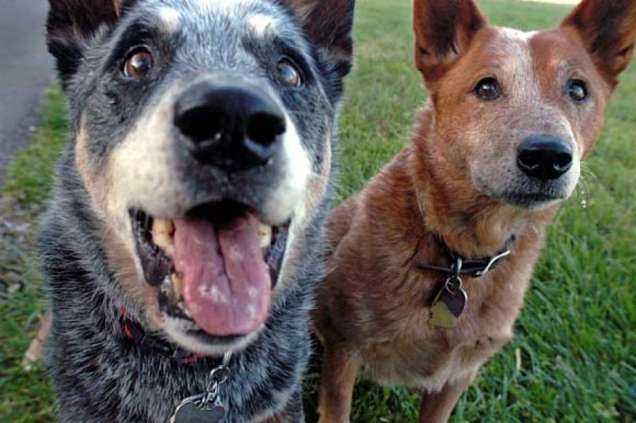
Southern Hills Animal Hospital
3827 Hite St. SW
Roanoke, VA 24014-2377
540-343-4155
Southern Hills Animal Hospital
